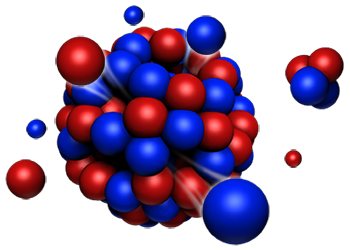Speaker
Description
The high-resolution powder diffractometer (HRPD) at the ISIS neutron spallation source has been in operation for almost 35 years and remains one of the leading instruments of its kind in the world. With a 95 m primary flight path and backscattering detectors covering 2θ = 154–176° the instrument achieves Δd/d ≈ 6x10−4 for data focussed over the whole backscattering array with a minimum Δd/d ≈ 3x10−4 at the highest backscattering angles [1]. HRPD has an outstanding track record of high-impact science in the fields of phase-transition studies, ab-initio structure determination, thermal expansion, microstructure analysis and a range of other fields in which subtle peaks shifts or splitting and peak-shape measurements are crucial [2]. The instrument has undergone numerous upgrades and refurbishments over the years, of which the most significant was the replacement of the original glass guide with a ballistic super-mirror guide in 2007, realising a substantial flux increase principally at shorter wavelengths [3]. However, the complementary upgrades to the detector arrays required to capitalise on this upgrade of the guide did not occur. The current detector banks thus consist of 20-25 yr old ZnS:Ag/6LiF-scintillator modules (5 mm pitch in backscattering, 3 mm pitch at 90 degrees), coupled by clear fibres to single-channel PMTs [4]; in forward scattering there is a small array of ½-inch helium tubes covering 2θ from 28–32°.
The aim of the HRPD-X upgrade proposal is to demolish the existing building in which HRPD is housed, erect a new building and then to replace the current instrument, including the detector arrays, sample tank and incident-beam conditioning devices. The proposed detector arrays will be based on wavelength-shifting fibre technology, and cover a substantially larger range of 2θ than the current arrays, particularly in forward-scattering geometry. This ensures better count-rate matching between banks, eliminates gaps in Q that occur in the current detector array when using longer time-of-flight windows (100-200 ms), and extends the maximum observable d-spacing out to ~ 50 Å (currently it is ~20 Å). Provision of a non-magnetic sample tank will allow HRPD to carry out measurements in applied fields up to 10 T in principle. Furthermore, improvements in upstream conditioning and sample collimation will work to reduce the large vertical divergence of the super-mirror guide and reduce backgrounds from in-situ sample environments. Together, these developments will allow HRPD’s exceptional capabilities to be applied to a range of new scientific problems, including supramolecular frameworks and complex magnetic structures.
This presentation will detail the current status of the HRPD-X project and summarise some recent refurbishment work designed to bridge the gap between the current and anticipated future state of the instrument.
[1] R. M. Ibberson et al., The High Resolution Powder Diffractometer (HRPD) at ISIS: A User guide. RAL Technical Report 92-031 (1992).
[2] https://www.isis.stfc.ac.uk/Pages/Hrpd-publications.aspx
[3] R. M. Ibberson, Nucl. Instr. Methods A, 600, 47-49 (2009)
[4] N. Rhodes et al., Nucl. Instr. Methods A, 529, 243-248 (2004)

